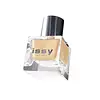What's inside
What's inside
 Key Ingredients
Key Ingredients

 Benefits
Benefits

 Concerns
Concerns

 Ingredients Side-by-side
Ingredients Side-by-side

Ethylhexyl Palmitate
EmollientSynthetic Fluorphlogopite
Polyglyceryl-2 Triisostearate
EmulsifyingHydrogenated Polyisobutene
EmollientDipentaerythrityl Hexahydroxystearate/Hexastearate/Hexarosinate
Skin ConditioningSynthetic Wax
AbrasiveSilica
AbrasiveSorbitan Sesquiisostearate
EmulsifyingZinc Oxide
Cosmetic ColorantTocopheryl Acetate
AntioxidantCaprylyl Glycol
EmollientMethicone
EmollientTriethoxycaprylylsilane
Caffeine
Skin ConditioningCyclodextrin
AbsorbentTocopherol
AntioxidantPhenoxyethanol
PreservativeCI 77891
Cosmetic ColorantCI 77492
Cosmetic ColorantCI 77491
Cosmetic ColorantCI 77499
Cosmetic ColorantEthylhexyl Palmitate, Synthetic Fluorphlogopite, Polyglyceryl-2 Triisostearate, Hydrogenated Polyisobutene, Dipentaerythrityl Hexahydroxystearate/Hexastearate/Hexarosinate, Synthetic Wax, Silica, Sorbitan Sesquiisostearate, Zinc Oxide, Tocopheryl Acetate, Caprylyl Glycol, Methicone, Triethoxycaprylylsilane, Caffeine, Cyclodextrin, Tocopherol, Phenoxyethanol, CI 77891, CI 77492, CI 77491, CI 77499
Water
Skin ConditioningIsododecane
EmollientDimethicone
EmollientTrimethylsiloxysilicate
EmollientDiisopropyl Sebacate
EmollientButylene Glycol
HumectantAlcohol
AntimicrobialPEG-10 Dimethicone
Skin ConditioningLauryl PEG-8 Dimethicone
Perlite
AbsorbentSodium Hyaluronate
HumectantSodium Chloride
MaskingDisteardimonium Hectorite
StabilisingPanax Ginseng Root Extract
EmollientPhenoxyethanol
PreservativePolymethylsilsesquioxane
Hdi/Trimethylol Hexyllactone Crosspolymer
Mica
Cosmetic ColorantAluminum Hydroxide
EmollientSilica Dimethyl Silylate
EmollientCaprylyl Glycol
EmollientSodium Stearoyl Glutamate
CleansingTocopheryl Acetate
AntioxidantGlycerin
HumectantEthylhexylglycerin
Skin ConditioningPolyhydroxystearic Acid
EmulsifyingLecithin
EmollientCellulose Gum
Emulsion StabilisingIsopropyl Myristate
EmollientEthylhexyl Palmitate
EmollientIsostearic Acid
CleansingPolyglyceryl-3 Polyricinoleate
EmulsifyingTriethoxycaprylylsilane
Silica
AbrasiveCI 77891
Cosmetic ColorantCI 77491
Cosmetic ColorantCI 77492
Cosmetic ColorantCI 77499
Cosmetic ColorantWater, Isododecane, Dimethicone, Trimethylsiloxysilicate, Diisopropyl Sebacate, Butylene Glycol, Alcohol, PEG-10 Dimethicone, Lauryl PEG-8 Dimethicone, Perlite, Sodium Hyaluronate, Sodium Chloride, Disteardimonium Hectorite, Panax Ginseng Root Extract, Phenoxyethanol, Polymethylsilsesquioxane, Hdi/Trimethylol Hexyllactone Crosspolymer, Mica, Aluminum Hydroxide, Silica Dimethyl Silylate, Caprylyl Glycol, Sodium Stearoyl Glutamate, Tocopheryl Acetate, Glycerin, Ethylhexylglycerin, Polyhydroxystearic Acid, Lecithin, Cellulose Gum, Isopropyl Myristate, Ethylhexyl Palmitate, Isostearic Acid, Polyglyceryl-3 Polyricinoleate, Triethoxycaprylylsilane, Silica, CI 77891, CI 77491, CI 77492, CI 77499
 Reviews
Reviews

Ingredients Explained
These ingredients are found in both products.
Ingredients higher up in an ingredient list are typically present in a larger amount.
Caprylyl Glycol is a humectant and emollient, meaning it attracts and preserves moisture.
It is a common ingredient in many products, especially those designed to hydrate skin. The primary benefits are retaining moisture, skin softening, and promoting a healthy skin barrier.
Though Caprylyl Glycol is an alcohol derived from fatty acids, it is not the kind that can dry out skin.
This ingredient is also used as a preservative to extend the life of products. It has slight antimicrobial properties.
Learn more about Caprylyl GlycolCi 77491 is also hydrated iron III oxide. It's sole purpose is to give a red/pink hue to products.
Iron III oxides are classified as inorganic chemicals for coloring.
Synthetically created Ci 77491 is considered safer than those naturally found. This is because the synthetically created version may contain less impurities. Iron oxides are generally non-toxic and non-allergenic.
Learn more about CI 77491Ci 77492 is also hydrated iron III oxide. It's sole purpose is to give a yellow hue to products.
Iron III oxides are classified as inorganic chemicals for coloring.
Synthetically created Ci 77492 is considered safer than those naturally found. This is because the synthetically created version may contain less impurities. Iron oxides are generally non-toxic and non-allergenic.
Learn more about CI 77492Ci 77499 is also hydrated iron III oxide. It is created from mixing red and black iron oxides. This helps give shades of darkness to a product.
Iron III oxides are classified as inorganic chemicals for coloring.
Ci 77891 is a white pigment from Titanium dioxide. It is naturally found in minerals such as rutile and ilmenite.
It's main function is to add a white color to cosmetics. It can also be mixed with other colors to create different shades.
Ci 77891 is commonly found in sunscreens due to its ability to block UV rays.
Learn more about CI 77891Ethylhexyl Palmitate, also known as octyl palmitate, is created from 2-ethylhexyl alcohol and palmitic acid. It is a fatty acid ester.
The fatty acid content of Ethylhexyl Palmitate makes it an emollient. Emollients help soften and hydrate your skin by trapping moisture within.
Ethylhexyl Palmitate is also used to help improve the texture of cosmetics. It helps other ingredient dissolve in products and help disperse ingredients more evenly.
You'll likely find this ingredient in sunscreen, as it is often used to mix UV-blocking ingredients such as avobenzone and ethylhexyl triazone.
It can also help stabilize the fragrances in a product as a fragrance fixative.
Ethylhexyl Palmitate can be used to substitute mineral oil.
Due to its high fatty acid content, it may not be fungal-acne safe.
Learn more about Ethylhexyl PalmitatePhenoxyethanol is a preservative that has germicide, antimicrobial, and aromatic properties. Studies show that phenoxyethanol can prevent microbial growth. By itself, it has a scent that is similar to that of a rose.
It's often used in formulations along with Caprylyl Glycol to preserve the shelf life of products.
Silica, also known as silicon dioxide, is a naturally occurring mineral. It is used as a fine, spherical, and porous powder in cosmetics.
Though it has exfoliant properties, the function of silica varies depending on the product.
The unique structure of silica enhances the spreadability and adds smoothness, making it a great texture enhancer.
It is also used as an active carrier, emulsifier, and mattifier due to its ability to absorb excess oil.
In some products, tiny microneedles called spicules are made from silica or hydrolyzed sponge. When you rub them in, they lightly polish away dead skin layers and enhance the penetration of active ingredients.
Learn more about SilicaTocopheryl Acetate is AKA Vitamin E. It is an antioxidant and protects your skin from free radicals. Free radicals damage the skin by breaking down collagen.
One study found using Tocopheryl Acetate with Vitamin C decreased the number of sunburned cells.
Tocopheryl Acetate is commonly found in both skincare and dietary supplements.
Learn more about Tocopheryl AcetateTriethoxycaprylylsilane is a silicone used to bind and stabilize ingredients.
As an emulsifier, it helps prevent ingredients from separating. This can help elongate the shelf life of products.
Triethoxycaprylylsilane is often used to coat mineral sunscreens ingredients to help give a better feel. It also helps reduce oxidative stress in sunscreens.
Learn more about Triethoxycaprylylsilane